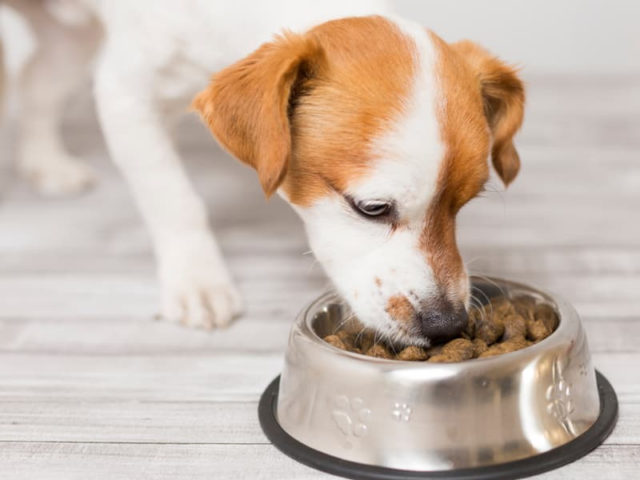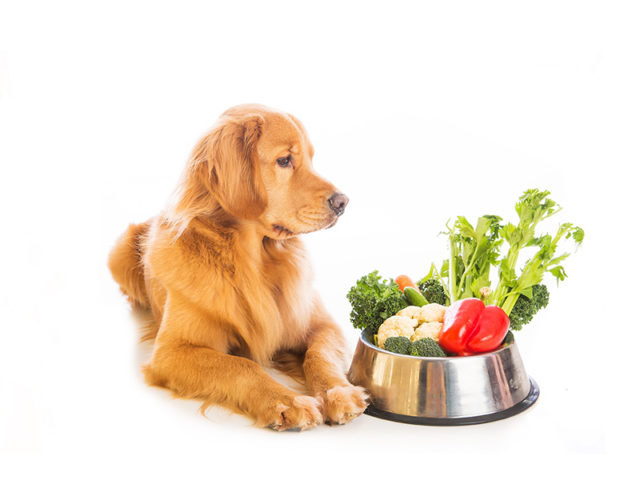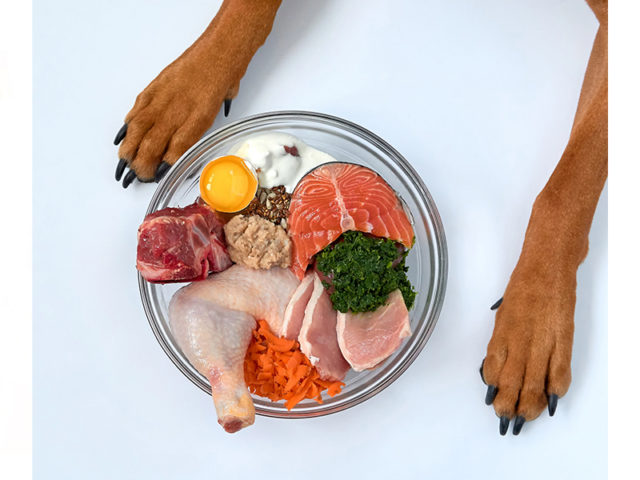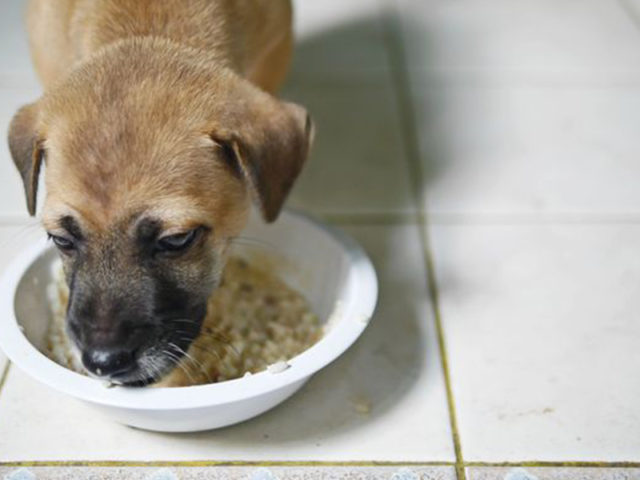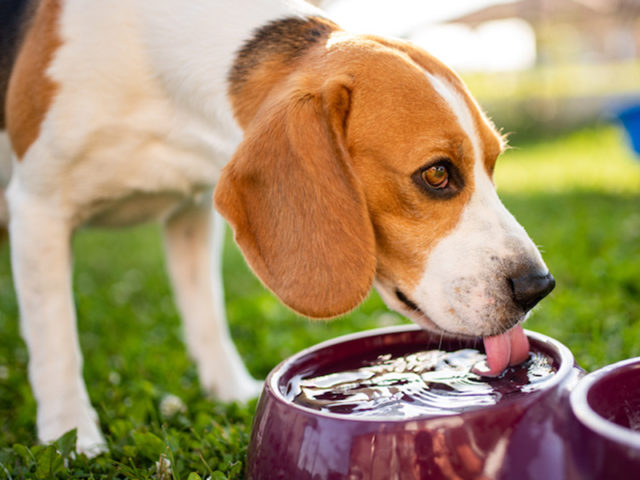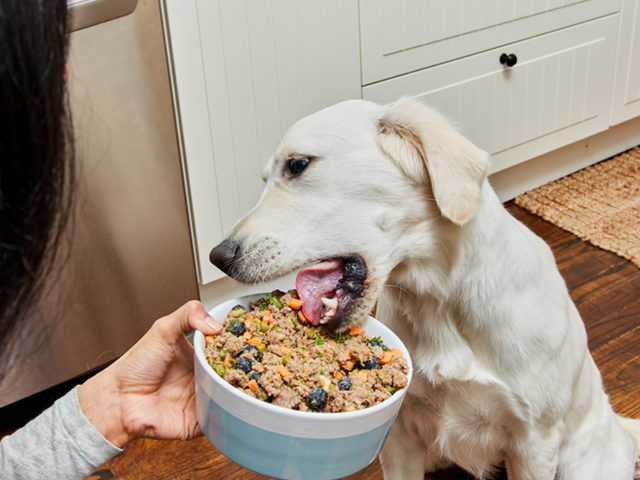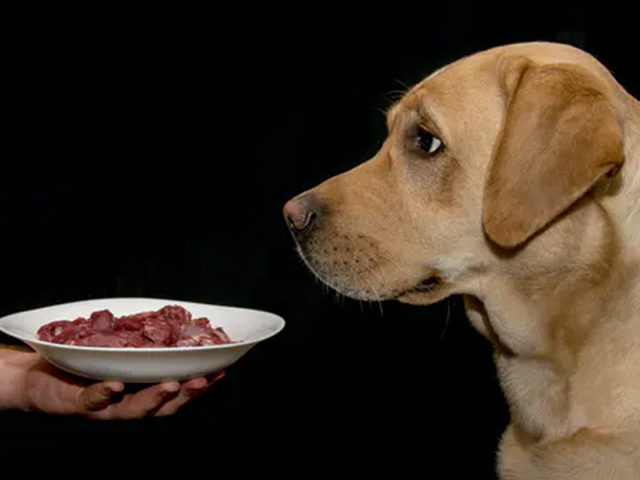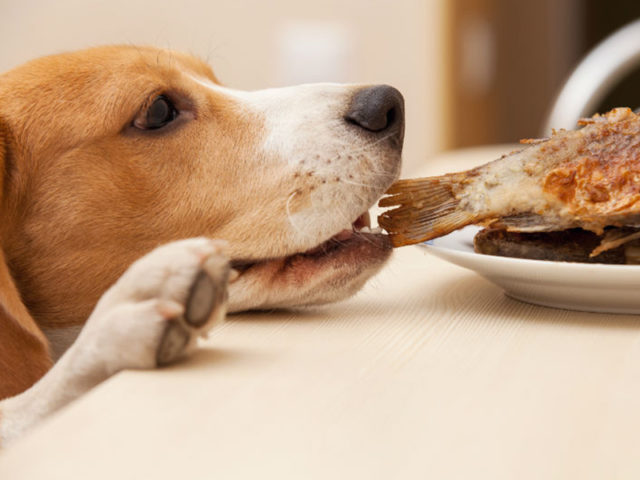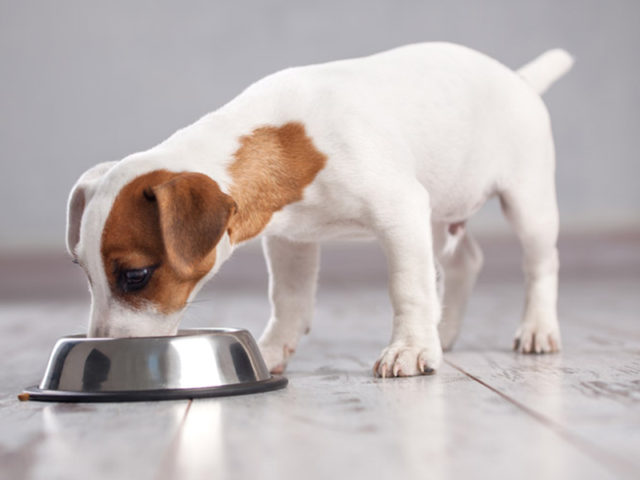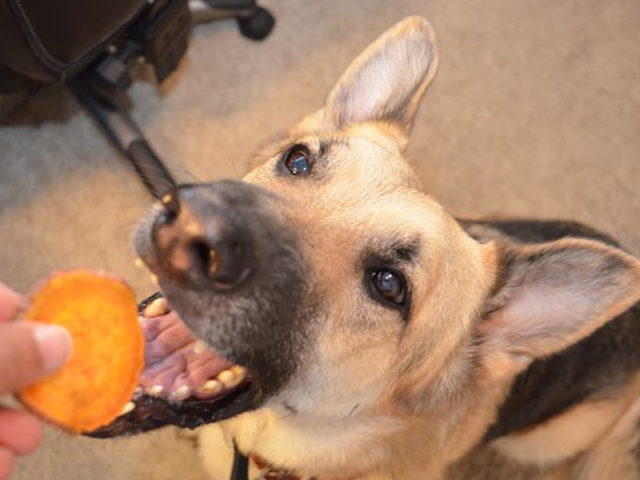Humans and dogs share a special relationship; anybody who owns a pet dog would vouch for it. Remember Akshay Kumar’s movie Entertainment? Just like that movie, our fur babies have taken the lead role in our lives and we want to give them the best possible treatment. Whatever you do for them, they always reciprocate their unconditional love and loyalty which is heart-warming. If you’re worried about choosing the best food for your pets, fret not because we’ve got you covered! Get the answer to all your questions about canine nutrition by experts.
TC46 connected with Julia, the founder of Canine India and Georgina, the founder of Georgina’s Kitchen to shed some light on your dogs’ nutritional needs. Here, they share what foods are good and bad for your dogs, with feeding techniques.
1. Know the essential nutritional requirements for dogs
Julia says’ “Dogs need certain nutrients as we all do – for dogs they are a bit different than for humans of course. Dogs need protein in their diet to thrive. Even though dogs can survive on a purely vegetarian diet, a species-appropriate diet can not be only vegetarian. The diet doesn’t have to be perfect, just adding some dehydrated treats or bones to chew, eggs, bone broth or anything that’s possible to conjure up is a good step. Contrary to common belief dogs do not need grains. Carbs are only required as about 2% of the diet for a dog!”
Georgina says, “There are different schools of thought when it comes to diets for dogs. The most practised one lists 6 essential nutritional requirements that are required for general well being and basic function. They are water, fat, protein, vitamins, minerals and carbohydrates.
1. Water: It is vital for basic function and for digestion and fresh foods are high in moisture, unlike dry commercial food. Lack of moisture in the diet can lead to serious health issues in dogs and hence it is essential to make sure that the meals that our dogs eat are high in moisture content.
2. Vitamins And Minerals: They are available in fresh foods and more bioavailable to the body compared to the synthetic vitamins and minerals in commercial foods.
3. Protein: It is the most debated topic, and has had a bad rap for a very long time. Meat protein is more bioavailable to dogs because the teeth and the body are designed to break down meat protein. Different protein types provide the body with nutrients that are more absorbable. Dogs on a meat protein diet that is high in moisture tend to have better immunity and better coats.
4. Fats: They are essential and are required in the diet. Fats provide energy and help with the absorption of fat-soluble vitamins to list a few reasons to add fats to the meals.
5. Carbohydrates: Feeding models, like the prey model, do not promote the use of carbohydrates in dog food. The feeding models followed by most holistic vets and practitioners now promote the use of carbohydrates for dogs. However, these carbohydrates are derived mostly from functional foods like vegetables and fruits.
Each dog is different and depending on several parameters such as health condition and activity levels, the nutritional needs are modified based on what the dog requires. This could mean that a particular dog might be on a diet with higher fat content or some dogs will require reduced protein content in their meals.”
2. Dogs have a hard time getting the nutrients out of plant-based foods
Julia says, “A dog’s digestive system is very different from that of a human or of an animal that is meant to eat a plant-based diet. The reason this is important is something we call ‘bioavailability of nutrients. Dogs have a hard time getting the nutrients out of plant-based foods.
If a dog eats a whole raw carrot, it won’t harm the dog but the carrot will come out the back pretty similar to the way it went in the front. This can be helped by breaking up the plant matter before feeding – by steaming, pureeing or mashing the veg food. The dog might still not get as much nutrition from it as you would hope, but it is easier for their bodies to digest.
A great way to feed vegetables is to ferment them, fermenting makes nutrients easier to absorb for dogs and provides probiotics which are friendly bacteria and helpful for a dogs tummy.”
3. Make sure you know what is in your dog food
Georgina says, “While choosing dog food, always read the labels. Read what the ingredients are and make wise choices on what to feed your dog. Most commercial dog foods claim to have adequate protein, however, there are loopholes around these claims. Ingredients like corn and soy are not considered nutritious for dogs and a lot of food brands have corn and soy as fillers. Most commercial food is also processed at very high temperatures, this depletes the nutritional value and makes the fats rancid. As a person who promotes fresh feeding, my strong recommendation would be to either prep meals at home – lightly cooked or raw diets work great for dogs. Or look for options to have fresh meals delivered to you. There are a lot of small home kitchens that deliver fresh meat-based meals.”
Julia says, “If it says ‘Chicken’ on the front but you can not find Chicken in the ingredient list on the back then better stay away from it. Make sure that you always know exactly what is in the food you give to your dog, that is the most important rule. If there are many ingredients that are not actual food that is a bad sign. Make sure the food you give has protein as the first or second ingredient. So chicken, fish, a lamb for example should be right in the first words on the label. The next step would be to think about what each ingredient does inside the body, why it is in the food and being aware of the connections and processes of food and health.”
4. Feeding style depends on the dogs’ activity levels and lifestyle
According to Georgina, feeding quantity and time generally depends on various parameters, “Meal quantity has to be decided based on age, health condition, activity levels and weight. Some dogs might require higher protein content in their diets and some might require reduced protein quantity. Puppies generally require more nutrients for growth and higher calcium content. Older dogs might require more protein and additional supplements to support health conditions that develop with old age. Most dogs will prefer to eat twice a day although there are exceptions to this and some dogs prefer to eat once a day. If your dog chooses to fast on any given day, it is perfectly alright to let them have fast days. Fasting is instinctive in a lot of breeds and dogs do this to give their gut a rest. Some dogs will struggle with acid reflux and might need to be fed smaller meals throughout the day to prevent nausea.”
Julia also shares the same process, “Feeding how much and how often heavily depends on the dogs’ activity levels and lifestyle. Feeding your dog breakfast, lunch, tea time snacks and dinner is a bit too much though. Dogs are animals that can last even days without food – of course, we all feed our dogs (and street babies if we can) daily but one or two meals is plenty in most cases. If your dog is hungry, a chew or small snack is always a good idea!”
5. Food rotation is best for your furry baby
“Best is rotation and variety and as much whole foods as possible- if you have to feed processed foods try to go for some with better ingredients and try to rotate the brand often. Also, provide plenty of water and make sure to add natural probiotics to the diet to help your dog’s tummy deal with the high amount of carbs and starch in processed foods. If you can, always add some real foods to the diet, whether home prepped or from trusted brands like Canine India”, shares Julia.
6. Home-cooked diet is nourishing
Georgina explains, “There is a misconception that chicken and rice can be a balanced diet. While fresh meals are most definitely better than commercial foods, it is not complete and will not provide the body with all the essential nutrients the body requires.
- Use different types of meat protein and alternate between at least 3-4 protein types. Include fish in the diet. It is perfectly alright to mix different protein types and keep fish constant.
- Use organ meat because organs are nutrient-dense and add immense value to the meals.
- Fats in the form of oils provide energy.
- Fibre and carbohydrates in the form of fruits, vegetables, seeds, psyllium husk.
- Bone meal or bones depending on raw or fresh feeding is an essential part of the diet that is missed out in most diets. Bones should never be cooked because cooked bones will splinter and can cause serious damage. Raw or dehydrated bones are safe to use. Eggshell powder is also an option.”
“A home-cooked diet is definitely more nourishing than a purely processed-foods based diet. Most important is to try to understand your dog’s body and give them variety and balance. Only chicken for example will cause allergies and skin and renal issues, in combination with rice the issues will get more.
If you add some fish and organ meat to a chicken-based home-cooked diet you will supply some of the much-needed Omega 3 to alleviate these inflammatory issues that a single protein diet or a lot of starchy food such as rice can bring. Talk to a nutritionist and make sure they explain exactly why they advise you to do or feed certain things, do your research and be confident in the changes you make!”, shares Julia.
7. Foods containing xylitol is a big no-no
Julia says, “You can share many of your foods with your dog! Any meat or fish you prepare for yourself, you can feed to your pup as well! If you add a pinch of fresh turmeric (haldi), ginger or garlic to your dog’s food, it has several beneficial qualities. A chilli or salt-based masala is not good for dogs. You can share your eggs, meat and many vegetables and fruits with your dog! Grapes, nuts, raisins, onions and chocolate should stay only on the human menu though!”
“Human grade food is the best for dogs. Use human grade meat, fish, seeds, nuts, fresh seasonal vegetables and fruits. These are rich sources of nutrients and provide a range of vitamins and minerals as well. Foods to avoid would be onions, raisins, grapes, chocolate and foods containing xylitol.”, says Georgina.
Here is a list of food items you should and should never feed your furbabies, no matter how adorably they beg.
8. Nutritional requirements differ for specific issues many breeds have
Julia explains, “Specific nutrition requirements are mostly based on the different specific issues many breeds have. For Indies, you do not have a particular food because Indies do not typically have any issues as a breed. For Golden Retrievers, Labradors and German Shepherds, hip and joint Issues are common so it is important to feed a calcium-rich diet and many anti-inflammatory foods as well as Omega 3 to these breeds from an early age. Rice and processed foods can have much more harmful effects on dogs that have certain dispositions so it is more about feeding the right diet to alleviate issues and keep the dog healthy than about what breed they are.”
9. Growing dogs have different requirements than an adult dog
Julia says, “A growing dog needs different nutrients than an adult dog – puppies need particularly high amounts of calcium in the diet to grow healthy teeth and bones.
- For Puppies: Chewing bones can be a life-saver nutritionally and because it helps them settle down, prevent gobbling as an adult and many other benefits. For puppies, high-quality nutrition is crucial to make sure the building blocks of their bodies are of pure and high quality.
- For Seniors: Calcium is important to help keep the bones healthy. Depending on any health issues an older dog might need a particular diet but it is not possible to say that every single senior dog needs a particular same nutritional change.”
Do you have what it takes to rock this dog lovers’ quiz? No matter what you score, you’ll be rewarded with some great pictures of beautiful dogs.
10. Avoid foods that can lead to obesity
Julia cautions, “Stay away from rice, processed foods, grains, potatoes. Anything starchy or rich in carbs is basically like sugar for dogs and that can lead to obesity. Stick to lean meats like fish and chicken breast and make sure to exercise your dog – walk them, play with them, make them work for any treat and make sure that the treats you feed are not guilty pleasures but instead part of the healthy diet. You can always try Canine India treats to supplement the diet without adding any fat or unhealthy element to your dogs’ diet!”
Here is how you can ensure your dog gets their daily dose of exercise in a fun setting!


